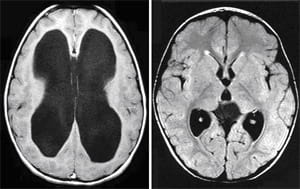Caring for Your Child at Home
Here is some basic information to help you care for your child at home after surgery.
Pain − If your child is under 4 years of age, give regular children's Tylenol as directed for his or her pain. Children older than 4 years may be sent home with a prescription for Tylenol with Codeine.
Diet − Once your child is home, he or she will be on a regular diet. There are some restrictions right after surgery, but since your child will be spending several nights with us, we will restrict the diet as needed during that time.
Wound care − Wash your child's incision each day with a mild shampoo.
Activity − Your child may slowly resume regular activities. Your child may return to school or daycare three to five days after surgery, depending on how he or she feels.
Medication − No medicines are given routinely after hydrocephalus surgery. If your child complains of pain at the site of the incision, give him or her Tylenol.
Bathing – Wash the wound daily with a mild soap or shampoo and rinse with clear water. A shower is fine if your child typically takes showers. Do not let the wound soak in water such as a bathtub or swimming pool until the skin is completely healed.
Follow-up care − About 14 days after surgery, your child will have a follow-up appointment with the Neurosurgery Division for a wound check. During that visit, we may also take more images of your child’s brain. If your child becomes ill in the future, this will help us figure out if hydrocephalus is causing the problem.
Watch your child for any signs of hydrocephalus. These would typically be the same symptoms that prompted the surgery. (See Shunt Malfunction for signs of hydrocephalus.)




